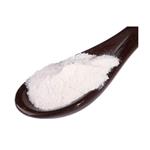- GW-501516
-

- $50.00 / 1kg
-
2025-04-18
- CAS:317318-70-0
- Min. Order: 1kg
- Purity: 99%
- Supply Ability: 10000 Kilogram/Kilograms per Day
- GW-501516
-

- $5.00 / 1Box
-
2025-04-18
- CAS:317318-70-0
- Min. Order: 1Box
- Purity: 99.99%
- Supply Ability: 20000 boxes
Related articles - The side effects of GW-501516
- GW-501516 is a peroxisome proliferator-activated receptor (PPAR) agonists. It may cause several side effects.
- Sep 27,2023
|
| | GW-501516 Basic information |
| | GW-501516 Chemical Properties |
| Melting point | 134-136°C | | Boiling point | 584.5±60.0 °C(Predicted) | | density | 1.42±0.1 g/cm3(Predicted) | | storage temp. | -20°C | | solubility | DMSO: soluble20mg/mL, clear | | form | powder | | pka | 3.17±0.10(Predicted) | | color | white to beige | | BRN | 18515150 | | Stability: | Light Sensitive | | InChI | InChI=1S/C21H18F3NO3S2/c1-12-9-16(7-8-17(12)28-10-19(26)27)29-11-18-13(2)25-20(30-18)14-3-5-15(6-4-14)21(22,23)24/h3-9H,10-11H2,1-2H3,(H,26,27) | | InChIKey | YDBLKRPLXZNVNB-UHFFFAOYSA-N | | SMILES | C(O)(=O)COC1=CC=C(SCC2SC(C3=CC=C(C(F)(F)F)C=C3)=NC=2C)C=C1C | | CAS DataBase Reference | 317318-70-0 |
| WGK Germany | 3 | | RTECS | AI9105500 |
| | GW-501516 Usage And Synthesis |
| Description | Peroxisome proliferator-activated receptor δ (PPARδ) stimulation or over-expression in adipocytes leads to increased fatty acid oxidation, improved exercise tolerance, and resistance to obesity. GW 501516 is the first highly selective synthetic PPARδ agonist available. GW 501516 binds to human PPARδ with an IC50 value of 1 nM, and is at least 100-fold selective for PPARδ compared to PPARα and PPARγ. In obese primates, GW 501516 increases high density lipoprotein cholesterol and apolipoprotein A-1 specific reverse cholesterol transport. GW 501516 is therefore a model compound for a new type of obesity therapeutic, as well as a selective pharmacological tool for understanding lipid metabolism. | | Description | GW501516, also known as GW-1516 or cardarine and endurobol, is a peroxisome proliferator-activated receptor delta (PPAR-δ) agonist. Activation of the receptor will increase fat-burning capacity and muscle production, as it changes the body's fuel preference from glucose to lipids. | | Chemical Properties | White Solid | | History | GW501516, also known as Cardarine, was originally discovered in the early 1990s during a research collaboration between two large pharmaceutical companies. The initial proposed use was for the treatment of hyperlipidemia (elevated fats in the blood), though later studies looked at its effectiveness for treating obesity, diabetes, and cardiovascular disease.
| | Uses | GW501516 has been used to study its effect on mutation-driven colorectal tumorigenesis and tumor invasion using mouse model. | | Uses | An experimental drug meant to control lipids and increase the level of HDL, or good cholesterol, in the bloodstream.
A cell-permeable, thiazolyl compound that acts as a potent, high affinity, PPARd agonist. Exhibits selectivity for PPARd compared t | | Definition | ChEBI: An aromatic ether that is phenoxyacetic acid in which the phenyl group is substituted at position 2 by a methyl group and at position 4 by a (1,3-thiazol-5-ylmethyl)sulfanediyl group, and in which the 1,3-thiazolyl group is substituted at positions 2 and 4
by p-trifluoromethylphenyl and methyl groups, respectively. | | General Description | GW501516 is the most selective and potent PPARβ (EC50=1.1nM) agonist that has been demonstrated to be 1,000-fold more selective in comparison to existing subtypes. It can regulate expression of genes involved in lipid catabolism and energy uncoupling in skeletal muscle cells and has been shown to block insulin resistance and fatty acid-induced nuclear factor-κB (NF-κB) activation. | | Biological Activity | GW 501516 is a potent and selective PPARδ agonist (EC50 = 1.2 nM). Displays <1000-fold selectivity over other PPAR subtypes. Increases ABC A1 transporter expression and induces apolipoprotein A1-mediated cholesterol efflux in vitro. Also increase serum HDL cholesterol and lowers small, dense LDL levels in obesity in vivo models. | | Biochem/physiol Actions | PPARδ activation by GW501516, retards weight gain through fatty acid catabolism in adipose tissue and skeletal muscles. GW501516 causes an increase in the levels high-density lipoprotein cholesterol and apolipoprotein A (apoA) and reduction in the low density-lipoprotein cholesterol, apoB, and triglyceride. | | Mechanism of action | GW501516 is a selective agonist (activator) of the PPARδ receptor. It displays high affinity (Ki = 1 nM) and potency (EC50 = 1 nM) for PPARδ with > 1,000 fold selectivity over PPARα and PPARγ.In rats, binding of GW501516 to PPARδ recruits the coactivator PGC-1α. The PPARδ/coactivator complex in turn upregulates the expression of proteins involved in energy expenditure.[31] Furthermore, in rats treated with GW501516, increased fatty acid metabolism in skeletal muscle and protection against diet-induced obesity and type II diabetes was observed. In obese rhesus monkeys, GW501516 increased high-density lipoprotein (HDL) and lowered very-low-density lipoprotein (VLDL). | | storage | Store at -20°C | | References | 1) Oliver?et al.?(2001),?A selective peroxisome proliferator-activated receptor delta agonist promotes reverse cholesterol transport; Proc. Natl. Acad. Sci. USA,?98?5306
2) Ito?et al.?(2012),?A PML-PPAR-δ pathway for fatty acid oxidation regulates hematopoietic stem cell maintenance; Nat. Med.,?18?1350
3) Barroso?et al. (2011), The PPARβ/δ activator GW501516 prevents the down-regulation of AMPK caused by a high-fat diet in liver and amplifies the PGC-1α-Lipin 1-PPARα pathway leading to increased fatty acid oxidation. Endocrinology,?152?1848
4) Okazaki?et al.?(2010),?PPAR beta/delta regulates the human SIRT1 gene transcription via Sp1; Endocr. J.,?57?403
5) Narkar?et al.?(2008),?AMPK and PPARdelta agonists are exercise mimetics; Cell,?134?405 |
| | GW-501516 Preparation Products And Raw materials |
|